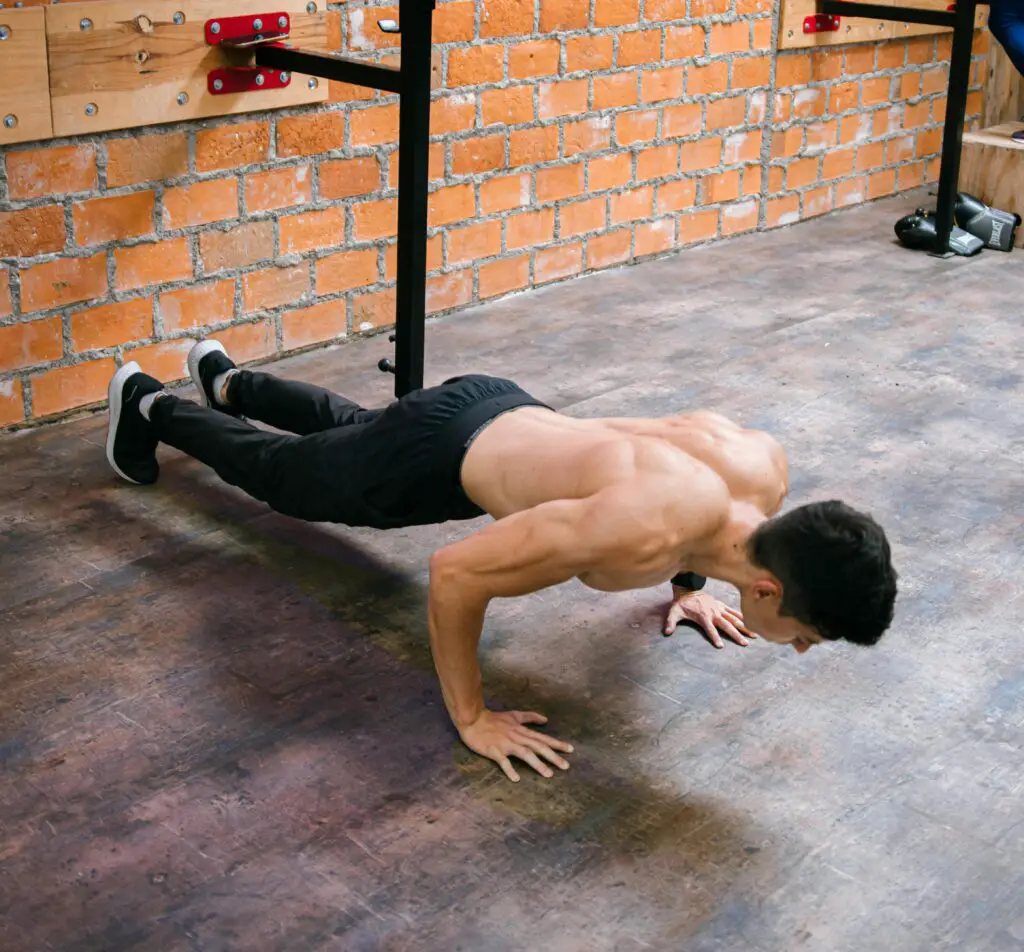One of the most basic bodyweight exercises, dips mainly engage the upper body’s muscles. Adding dips to your workout routine can be pretty beneficial, regardless of your experience as an athlete or fitness enthusiast.
Dips include lowering and elevating your body while using parallel bars or a comparable device to support oneself. This is a versatile complement to any fitness plan because it increases muscle endurance and builds strength.

Muscles Targeted by Dips
Many key muscle groups are used when performing dips. The main muscles used are the triceps, shoulders, and chest. Furthermore, dips work the upper back and core muscles, which are stabilizers.
Types of Dips Exercise
There are various variants of dip exercises that target different muscle parts and offer distinct advantages. Let’s examine each of the dip types in more detail:
Parallel Bar Dips:
The most popular kind of dips are called parallel bar dips, and they’re done using two parallel bars that you can usually find at gyms or dip stations. This version focuses mainly on the triceps, shoulders, and chest. It also works the muscles in the upper back and core for stability. Because parallel bar dips need stability and upper body strength, they can be difficult, especially for beginners.
Bench Dips:
Bench dips are done on a solid, elevated surface like a bench. Grasping the edge of the bench with their hands behind them, the practitioner sits on its edge. Compared to parallel bar dips, bench dips place more of an emphasis on the triceps and less on the chest and shoulders. Bench dips can be performed with household furniture or standard gym equipment, making them more accessible than parallel bar dips.
Weighted Dips:
Adding extra resistance to weighted dips allows you to intensify the exercise. This can be accomplished by utilizing a dip belt with weight plates, a weighted vest, or a dumbbell between the feet.
By adding resistance, weighted dips target the same muscle areas as parallel bar dips, which makes them helpful in developing strength and size in the muscles.
Weighted dips are an excellent progression for those who have mastered bodyweight dips and want to push themselves further.

Ring Dips:
Gymnastics rings hanging from an overhead framework are used for ring dips. The exercise becomes more difficult due to the rings’ instability, which calls for more cooperation and stabilization.
Because of the instability of the rings, ring dips activate the same major muscle groups as parallel bar dips, but they also activate more stabilizer muscles.
Ring dips enhance orientation perception and joint stability and strengthen upper body strength, making them beneficial for total functional fitness.
Assisted Dips:
Resistance bands or a machine are used to help with the movement when performing assisted dips. This version is helpful for people who lack the power or mobility to perform bodyweight dips.
Assisted dips employ the same muscle areas as other dip variations, giving people a lower resistance option to increase their strength and technique progressively.
Proper Form and Technique
To optimize dip performance and avoid injury, appropriate form must be maintained. Start by placing your torso perpendicular to the ground and extending your arms between the bars. Push yourself back up to the starting position after lowering yourself until your elbows are bent at a 90-degree angle. Be careful of frequent errors like overly bending your back or stretching out your elbows.
Benefits of Dips Exercise
Dip exercise has many advantages that improve physical health and fitness in general. Let us examine these advantages more thoroughly:
Upper Body Strength: The upper body muscles, including the triceps, shoulders, and chest, are the main focus of dips. You may successfully train these muscle groups and build upper body strength by doing dips regularly.
Improved Muscle Endurance: Dynamic bodyweight exercises like dips call for consistent effort and control throughout the activity. Dips can improve muscle endurance, enabling you to engage in other exercises with less exhaustion.
Enhanced Core Stability: Dips mainly engage the muscles of the upper body, but they also target the core muscles for stability. Good form can enhance Core strength and stability during dips, which is essential for general functional fitness.
Joint Health and Mobility: Complete range of motion dips enhance joint health and range of motion in the shoulders, elbows, and wrists. Dips performed correctly can help keep joints flexible and avoid stiffness or pain.

Functional Fitness Benefits: Dips simulate actions that are frequently performed in daily life, including getting up from a seated posture or opening a heavy door. You can increase functional fitness and facilitate daily tasks by including dips in your workout routine.
Incorporating Dips into Your Workout Routine
You must carefully include dips into your workout routine to get the most out of them. Try incorporating dips into your full-body or upper-body workouts at least twice weekly. Try various sets and repetitions to see what level of intensity works best for you.
Progression and Variations
You can experiment with more sophisticated versions or add weight to progressively increase dips’ difficulty as you become more proficient with them. For instance, you can wear a weighted vest or place a dumbbell between your feet to add resistance during weighted dips. Ring dips, done on gymnastics rings, engage the same muscular groups but also put stability and coordination to the test.
Precautions and Safety Tips
Even though dips are a great exercise, you should go cautiously, mainly if you’ve never done one before. Always properly warm up your muscles and joints before doing dips to ensure they are ready for the exercise. Pay attention to your body’s signals and refrain from pushing past pain or discomfort, which could result in damage.
Dips for Different Fitness Goals
Dips can be customized to meet your unique goals, whether your objective is to gain muscle, reduce weight, or increase strength. Make sure you perform dips with a regulated form and gradually increase the resistance if you want to build muscle. Losing weight is your primary goal, and it includes taking dips in a comprehensive fitness program with cardiovascular exercises and a healthy diet.

Conclusion
In conclusion, dips are a highly effective exercise for sculpting and strengthening the upper body. By incorporating dips into your workout routine and adhering to proper form and technique, you can achieve significant muscle mass, strength, and overall fitness gains. Whether your goal is to lose body fat or gain more muscle, or enhance athletic performance, dips offer a versatile and challenging workout option.
